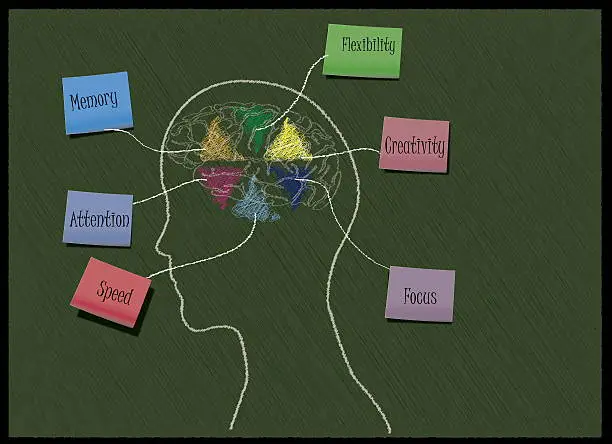The human brain is one of the most complex and powerful organs, responsible for everything from our thoughts and feelings to physical movement. Despite incredible advancements in science, much of how the brain works remains a mystery. BrainPathJunction is helping to unlock these mysteries by focusing on the brain’s intricate communication networks.
In this blog, we’ll explore what BrainPathJunction is, how it helps map out brain networks, and why understanding these pathways is key to brain health, learning, and human behavior.
1. What is BrainPathJunction?
BrainPathJunction refers to the intersections or “junctions” where neural pathways meet in the brain. Our brain is made up of billions of neurons, and these neurons communicate with each other through synapses. These synapses form vast, interconnected networks that enable different parts of the brain to talk to each other.
These neural networks are responsible for everything we do, from solving a math problem to remembering a loved one’s face. BrainPathJunction is all about understanding these connections—the points where pathways intersect—and how they influence brain function. By mapping these brain connections, researchers can better understand how the brain operates and how different areas work together.
2. Why Understanding Brain Networks Matters
The brain is a highly adaptable organ. Through neuroplasticity, the brain changes in response to new experiences, learning, or even injury. The neural networks that make up our brains are constantly shifting and adapting. This is why understanding how brain networks work is so important.
Here are a few key reasons why understanding these brain networks is crucial:
- Learning and Memory: Learning and memory are shaped by neural connections. When we learn something new, specific neural networks are activated and strengthened. Over time, with practice, these connections become more solid, allowing us to recall information more easily.
- Mental Health: Mental health disorders such as depression, anxiety, and schizophrenia are often linked to disruptions in brain networks. By understanding how these networks are impacted, researchers hope to develop better treatments that target the affected pathways.
- Recovery from Injury: When someone suffers a brain injury or stroke, certain neural networks can become damaged. By understanding the brain’s structure, doctors and therapists can develop rehabilitation strategies to help patients recover and retrain other parts of the brain to take over lost functions.
- Understanding Behavior: Our brain networks play a huge role in how we behave, make decisions, and regulate emotions. Understanding the pathways that influence behavior can help explain why people act or respond in certain ways and how these actions can be influenced or changed.
3. How BrainPathJunction Maps the Brain
To study BrainPathJunctions and the brain’s networks, scientists use advanced technologies that allow them to map out the brain’s connections. Some of the most common methods include:
- MRI (Magnetic Resonance Imaging): MRI scans allow researchers to create detailed images of the brain. Functional MRI (fMRI) is especially useful because it shows which areas of the brain are active while performing tasks, helping researchers understand how different networks interact during specific activities.
- EEG (Electroencephalogram): EEG measures the electrical activity in the brain. It’s a great tool for understanding the timing of neural activity, such as when different brain areas synchronize during tasks like problem-solving or recalling memories.
- Connectomics: Connectomics is the study of mapping all the neural connections in the brain. This is an incredibly detailed process, but it provides insight into how information flows through the brain and how different areas are connected.
By using these techniques, researchers can create a clearer picture of the brain’s pathways and how different regions communicate, allowing for deeper insights into both healthy and diseased brains.
4. Applications of BrainPathJunction in Everyday Life
Understanding brain networks is not just for neuroscientists—it has practical applications that can improve everyday life. Here’s how BrainPathJunction is relevant to daily living:
- Education: Learning is a process that involves strengthening specific brain networks. By understanding which neural pathways are involved in learning and memory, educators can develop more effective teaching methods that align with how the brain processes and stores information.
- Mental Health: For individuals dealing with mental health issues like anxiety or depression, understanding how their brain networks are functioning can lead to more targeted treatments. Techniques like cognitive behavioral therapy (CBT) or transcranial magnetic stimulation (TMS) aim to recalibrate these networks, helping patients manage their conditions more effectively.
- Rehabilitation: After a brain injury, therapists use knowledge of brain networks to help patients recover lost functions. By promoting neuroplasticity, patients can strengthen alternative neural pathways, regaining skills and improving quality of life.
- Personal Growth: On a personal level, understanding your brain’s pathways can help you optimize how you learn, make decisions, and manage emotions. Knowing that your brain is constantly capable of change (neuroplasticity) allows you to focus on areas of improvement, whether it’s enhancing memory, boosting creativity, or managing stress more effectively.
5. The Future of BrainPathJunction Research
The study of brain networks and BrainPathJunction is still evolving, but it holds enormous potential. As technology improves, researchers hope to map the brain in even more detail, unlocking new possibilities for treating neurological disorders, enhancing mental health, and optimizing brain function.
In the future, we may see highly personalized brain maps that help doctors create customized treatment plans based on an individual’s unique neural structure. We could also see advancements in brain-computer interfaces, allowing people to control devices with their thoughts or enhance cognitive abilities in ways we can’t yet imagine.
Conclusion
BrainPathJunction offers a new way to explore and understand the brain’s networks. By mapping the pathways and intersections where neurons communicate, we can gain deeper insights into how the brain works, how it adapts, and how it influences everything we do. As research continues to advance, BrainPathJunction will play a crucial role in unlocking the secrets of the brain, helping us lead healthier, more fulfilling lives, and paving the way for groundbreaking discoveries in neuroscience.
Understanding how the brain’s networks operate not only improves our grasp of learning, mental health, and recovery but also opens the door to future innovations that will change how we interact with our own minds.











